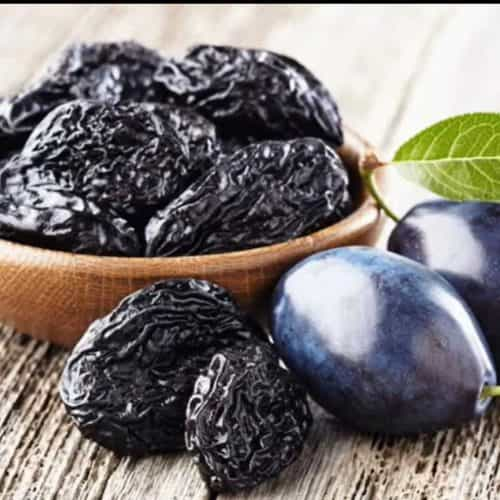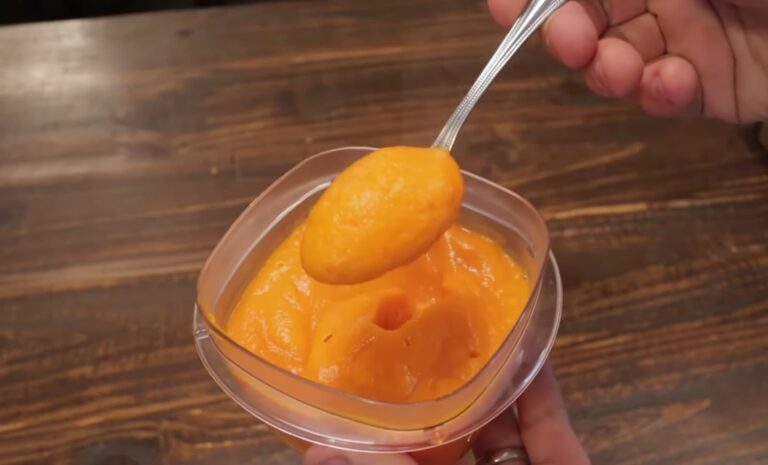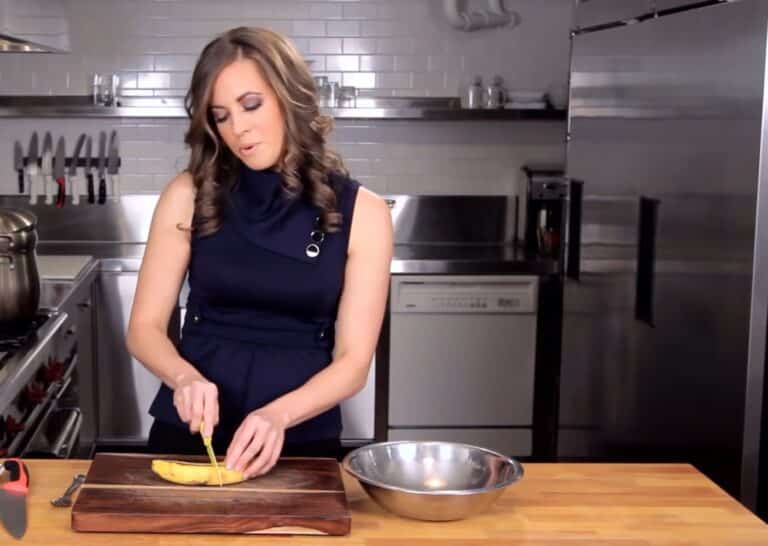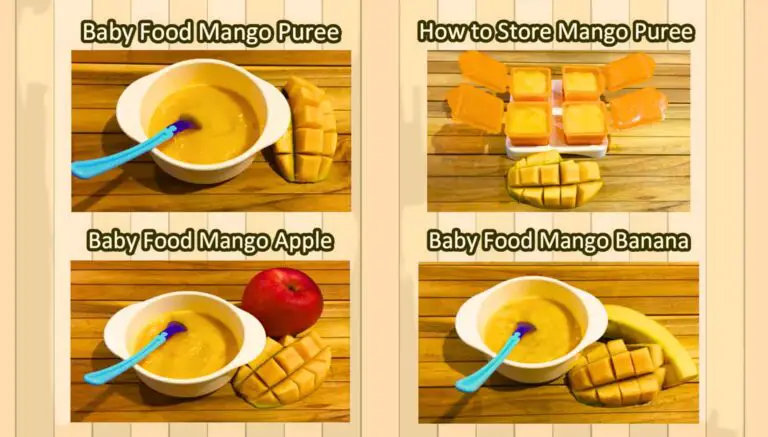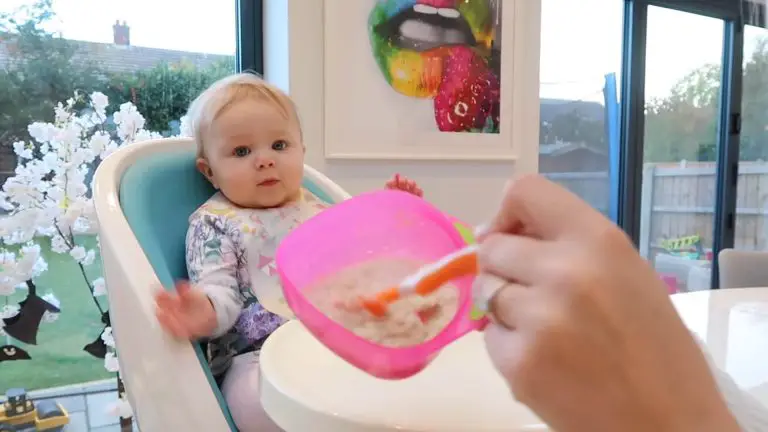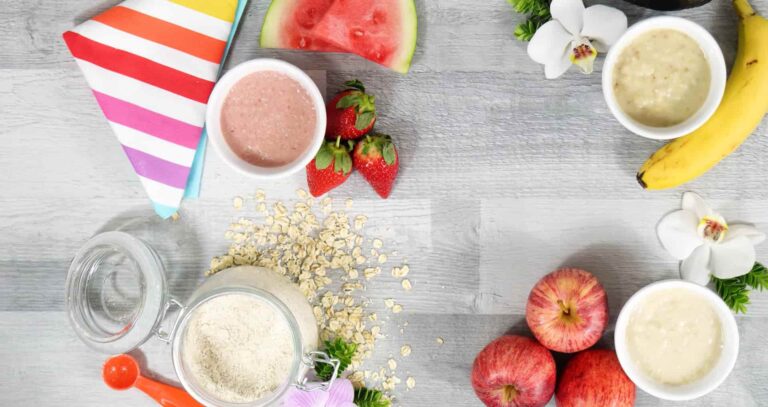How to Make Papaya Puree for Baby|Easy and Nutritious Recipe

To make papaya puree for baby, use a small sharp knife to cut the flesh away from the skin of a ripe papaya, discard the skin, and cut the flesh into bite-size chunks. Then, puree the papaya in a food processor or blender until smooth.
Why Choose Homemade Papaya Puree For Your Baby
Benefits Of Homemade Baby Food
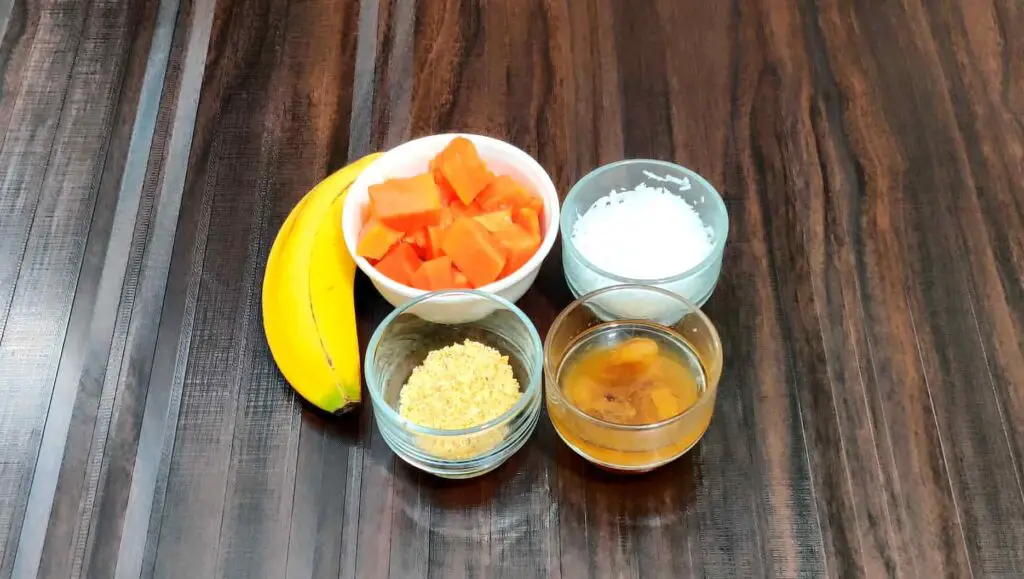
When it comes to feeding your baby, homemade baby food has numerous benefits. Making your own purees allows you to have complete control over the ingredients, ensuring that your baby is getting the freshest and most nutritious foods available. Here are some of the key advantages:
- Quality ingredients: Homemade baby food allows you to select high-quality ingredients, such as fresh fruits and vegetables, without any added preservatives or artificial flavors.
- Cost-effective: Making your own baby food can save you money in the long run. Store-bought baby food can be expensive, especially if your baby is consuming it on a regular basis.
- Customizability: Homemade purees allow you to tailor the flavors and textures to your baby’s preferences and developmental stage. You can introduce a wide variety of flavors and gradually increase the texture as your baby grows.
- Introducing healthy eating habits: By making your own baby food, you can introduce your little one to a wide range of fruits and vegetables, helping to establish healthy eating habits from a young age.
Nutritional Value Of Papaya
Papaya is a tropical fruit that is packed with essential nutrients beneficial for your baby’s growth and development. Here are some of the key nutritional components of papaya:
| Nutrients | Benefits |
| Vitamin C | Boosts the immune system, aids in iron absorption, and promotes healthy skin |
| Vitamin A | Supports healthy vision, skin, and immune function |
| Fiber | Helps digestion, prevents constipation, and maintains a healthy weight |
| Potassium | Regulates blood pressure and supports heart health |
| Antioxidants | Protects cells from damage, reduces inflammation, and supports overall health |
Incorporating papaya puree into your baby’s diet can provide them with these essential nutrients, contributing to their overall health and well-being.
Selecting And Preparing The Papaya
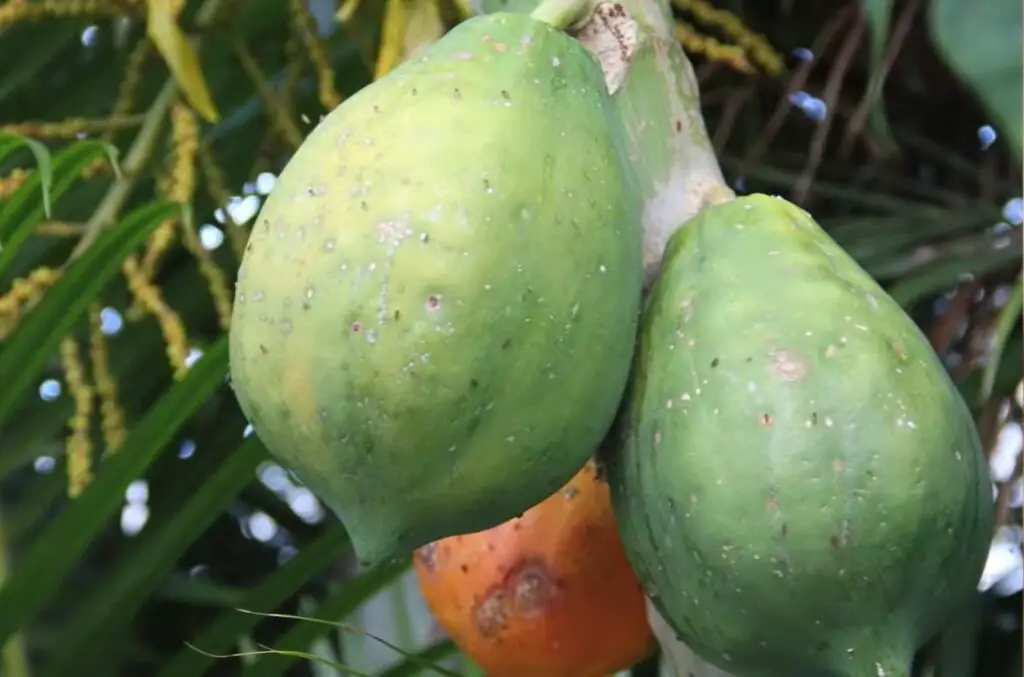
Choosing A Ripe Papaya
When it comes to making papaya puree for your baby, choosing a ripe papaya is crucial. A ripe papaya will have a vibrant orange color and a slight give when gently pressed. Avoid papayas that are green or have any soft spots, as they may not be ripe enough for pureeing. Opt for papayas that have a sweet aroma, indicating their ripeness. Selecting a perfectly ripe papaya will ensure that your baby gets the best taste and nutritional value from the fruit.
Washing And Peeling The Fruit
Once you have selected a ripe papaya, it’s important to wash and peel the fruit properly before preparing the puree. Follow these simple steps:
- Start by rinsing the papaya under cool running water to remove any dirt and impurities on the skin.
- Using a clean cutting board and a sharp knife, carefully cut the papaya in half lengthwise.
- Using a spoon, scoop out the black seeds from the center of each papaya half.
- Next, with a vegetable peeler or a paring knife, gently remove the outer skin of the papaya. Make sure to remove all the skin, as it can be tough and difficult for your baby to digest.
- Once the papaya halves are peeled, cut them into smaller, bite-sized chunks. This will make it easier to puree later on.
By properly washing and peeling the papaya, you’ll ensure that it is clean and safe for your baby to consume. Remember, always use fresh and quality ingredients to provide the best nutrition for your little one.
In conclusion, selecting and preparing a papaya for your baby’s puree doesn’t have to be complicated. By choosing a ripe papaya and properly washing and peeling the fruit, you can create a delicious and nutritious puree that your baby will love.
Step-by-step Guide: How To Make Papaya Puree For Baby
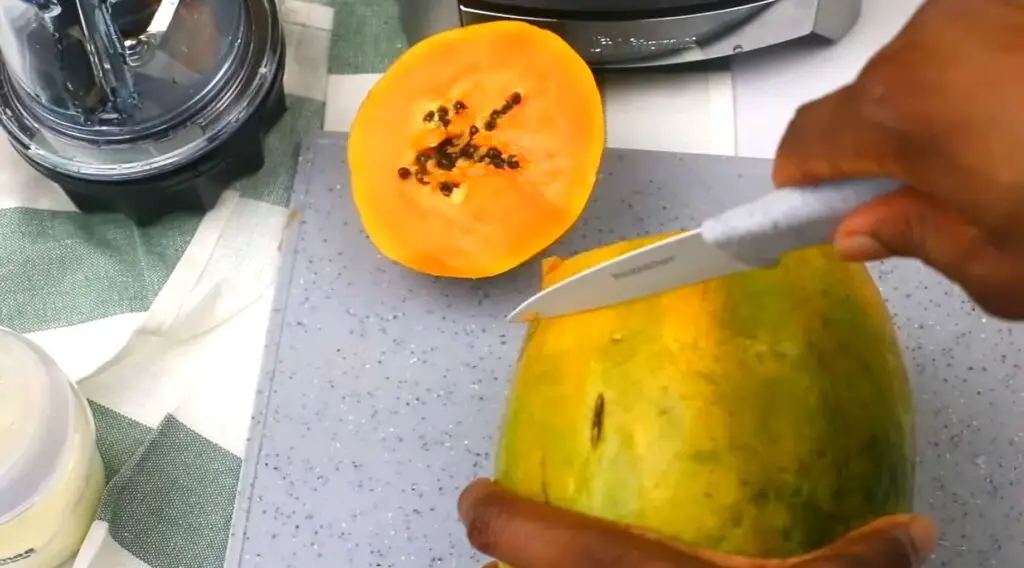
If you’re considering introducing solids to your baby, papaya puree is a nutritious and delicious option. Papaya is rich in vitamin C, fiber, and antioxidants, making it a great choice for your little one’s diet. In this step-by-step guide, we’ll walk you through the process of making papaya puree for your baby.
Cutting The Papaya
The first step in making papaya puree is to prepare the fruit. Start by selecting a ripe papaya. A ripe papaya will have yellow or orange skin with a sweet smell.
To cut the papaya, follow these steps:
- Wash the papaya under cold running water to remove any dirt or impurities.
- Place the papaya on a cutting board and use a sharp knife to cut off the top and bottom of the fruit.
- Stand the papaya upright on one of the cut ends and carefully slice away the skin, moving from top to bottom.
- Once the skin is removed, cut the papaya in half lengthwise.
- Scoop out the seeds using a spoon or a knife.
- Now, you have papaya halves ready for the next step.
Removing The Seeds
Papaya seeds are not suitable for your baby’s consumption, so it’s important to remove them before making the puree.
Here’s how to remove the seeds from papaya:
- Use a spoon to scoop out the seeds from the papaya halves.
- Discard the seeds or save them for other uses.
Steaming Or Boiling The Fruit
The next step is to cook the papaya to make it easier to blend into a smooth puree.
You have two options for cooking the papaya:
- Steaming: Place the papaya halves in a steamer basket and steam for about 10-15 minutes until they are soft and tender.
- Boiling: Fill a saucepan with water and bring it to a boil. Add the papaya halves and cook for around 10 minutes until they are fork-tender.
Once the papaya halves are cooked, remove them from the steamer or saucepan and let them cool for a few minutes.
Blending Into A Smooth Puree
The final step is to blend the cooked papaya halves into a smooth puree that your baby can easily consume.
Follow these steps to blend the papaya:
- Cut the cooked papaya halves into smaller chunks.
- Place the papaya chunks in a blender or food processor.
- Pulse or blend the papaya until it reaches a smooth consistency.
- If the puree is too thick, you can add a little water or breast milk/formula to achieve the desired consistency.
- Pour the papaya puree into storage containers or ice cube trays for easy portioning.
- Store the puree in the refrigerator for up to three days or in the freezer for up to three months.
Your homemade papaya puree is now ready to be served to your little one! Remember to always introduce new foods one at a time and watch for any signs of allergies or intolerances. Enjoy this nutritious and delicious treat for your baby!
Potential Allergies Or Reactions
Watch Out For Any Allergies
When introducing papaya to your baby’s diet, it’s important to be aware of any potential allergies or reactions. Although papaya is generally considered safe for most babies, there is always a risk of an allergic reaction, just like with any other food. By monitoring your baby closely and following a few simple guidelines, you can help ensure a safe and positive introduction to papaya puree.
Introducing Papaya Gradually
When introducing any new food to your baby, it’s recommended to start with small amounts and observe their reaction. This applies to papaya puree as well. Begin by offering a small spoonful of papaya puree and carefully watch for any signs of an allergic reaction. It’s best to wait for at least three days before introducing another new food to easily identify any potential allergies.
If your baby shows no signs of an allergic reaction after the initial introduction of papaya puree, you can continue incorporating it into their diet. Gradually increase the portion size and frequency over time, while closely monitoring for any adverse reactions.
Symptoms Of Allergic Reaction To Papaya
If your baby is allergic to papaya, they may experience symptoms such as:
- Rash or hives
- Swelling of the lips, tongue, or face
- Difficulty breathing or wheezing
- Vomiting or diarrhea
- Stomach pain or discomfort
- Irritability or fussiness
If you notice any of these symptoms after feeding your baby papaya puree, stop serving it immediately and consult with your pediatrician. They will be able to provide guidance and determine if your baby has a confirmed allergy to papaya.
When To Seek Medical Attention
In rare cases, an allergic reaction to papaya can be severe and may require immediate medical attention. If your baby experiences any of the following symptoms, seek emergency medical care:
- Difficulty breathing or swallowing
- Severe swelling of the face, lips, or throat
- Loss of consciousness
Remember, every baby is unique, and their tolerance to different foods may vary. It’s important to be vigilant and observant when introducing new foods, including papaya puree, to ensure your baby’s safety and well-being.
Nutritional Benefits
Papaya puree is not only delicious but it also offers a plethora of nutritional benefits for your baby. Here are some reasons why introducing papaya into your baby’s diet can be a great choice:
Rich In Vitamins And Minerals
Papaya is packed with essential vitamins and minerals that promote your baby’s overall growth and development. It is an excellent source of vitamin C, which strengthens the immune system and aids in wound healing. Additionally, papaya contains vitamin A, which supports healthy eyesight and skin health.
It is also a good source of folate, a B vitamin that plays a crucial role in cell growth and development. Folate is particularly important for pregnant women as it helps in the formation of the baby’s neural tube.
Fiber-rich
Papaya is high in fiber, making it a great choice for babies who are experiencing constipation. Fiber helps regulate bowel movements and promotes healthy digestion. Introducing papaya puree into your baby’s diet can help ease digestive discomfort and keep their digestive system regular.
Natural Antioxidants
Papaya contains natural antioxidants such as beta-carotene and lycopene. These antioxidants help protect your baby’s cells from damage caused by free radicals and reduce the risk of chronic diseases later in life.
Easy To Digest
One of the great advantages of papaya puree is that it is easily digestible for babies. The natural enzymes present in papaya, such as papain, aid in breaking down proteins and making them easier for your baby’s delicate digestive system to handle.
Frequently Asked Questions On How To Make Papaya Puree For Baby
Is Papaya Puree Good For Babies?
Yes, papaya puree is good for babies. Cut the flesh, discard the skin, and puree it in a food processor or blender. You can add a little baby milk for desired consistency. Ripe papaya blends easily and its natural sweetness makes it enjoyable for babies.
How To Prepare Papaya For Baby?
To prepare papaya for the baby, use a small knife to cut the flesh away from the skin. Discard the skin and cut the flesh into bite-size chunks. Puree the papaya in a food processor or blender until smooth. Add a little baby milk, if needed, to reach the desired consistency.
What Can I Mix In Papaya For Baby Food?
You can mix bananas with papaya to make baby food.
Can I Cook Papaya For Baby?
Yes, you can cook papaya for your baby. Mash it up if it’s ripe or puree it in a food processor/blender until smooth. You can add a little baby milk for desired consistency.
Conclusion
Making papaya puree for your baby is a simple and nutritious option. Begin by cutting the flesh away from the skin and pureeing it in a blender or food processor until smooth. You can add a little baby milk for a creamier consistency.
Remember to choose a ripe papaya for a smoother puree and natural sweetness. Enjoy this healthy addition to your baby’s diet!

